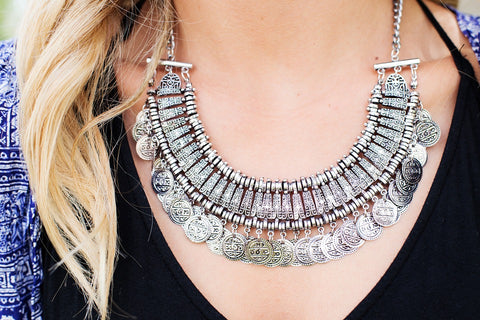Jewelry design can be a fantastic way to flex your creative muscle. You can count on an ongoing demand—people have loved jewelry since the very beginning of time and it continues to be among the most popular purchases. If you’re interested in jewelry design for a career, you may be wondering how to launch. Here are a few ideas.

(Pixabay / estall)
Getting Started
The responsibilities of a jewelry designer have evolved with the changing technology. Jewelry designers today use various computer-aided design tools in their work, which is a far cry from the days when jewelry designers were armed with only their sketch pads and imagination. In addition, the internet has allowed jewelry designers to get ideas from various sources all over the world.
To start a career in jewelry design, you should complete a jewelry design course that takes between six months and a year. Finding employment in a jewelry design house will expose you to the various nuances of the trade, giving you invaluable experience in the field. With enough experience in jewelry design, you can get your certification from the Jewelers of America, which will add another layer to your credibility in the profession.
Mastering the Fundamentals
Jewelry design begins with a concept, which is the most basic step in the jewelry creation process. You then need to be comfortable working with a wide range of materials to turn your idea into an actual piece of jewelry. As a jewelry designer, you have to go through various stages of education in order to learn the fundamentals of the industry. You have to hone your techniques and strategies to be considered a professional jewelry designer.
Get the Right Tools
Getting started in jewelry design will require an investment in the right equipment. This may feel overwhelming at first, but if you’re successful, you can recover your startup costs quite quickly. You can start small by investing in tools like flat and round-nose pliers and crimping tools, expanding out to sophisticated equipment like gold plating kits with time. These tools and systems will give you valuable hands-on experience and opportunities to master new skills that will add to your growing list of capabilities.
Creating a Portfolio
You can list out your credentials as a jewelry designer on a resume, but you also need to make a visual display of your work in the form of a portfolio. Build a body of work that you can showcase to potential clients (or companies that want to hire you). Make sure you can display it digitally for people who want to see your work from a distance.
Running Your Own Business
One great thing about being a jewelry designer is that it gives you the freedom to work for yourself or others. If you decide to start your own business, you’ll need to do more than just craft attractive pieces. You’ll also need to get good at marketing your jewelry, managing employees (if you have a staff), working with customers, and handling your accounting. A lot of this can be learned on the job, but it doesn’t hurt to pick up a mentor in the industry to guide you and give you advice. You can also learn a lot by reading about various aspects of business ownership and watching what your competitors are doing to build their businesses.
